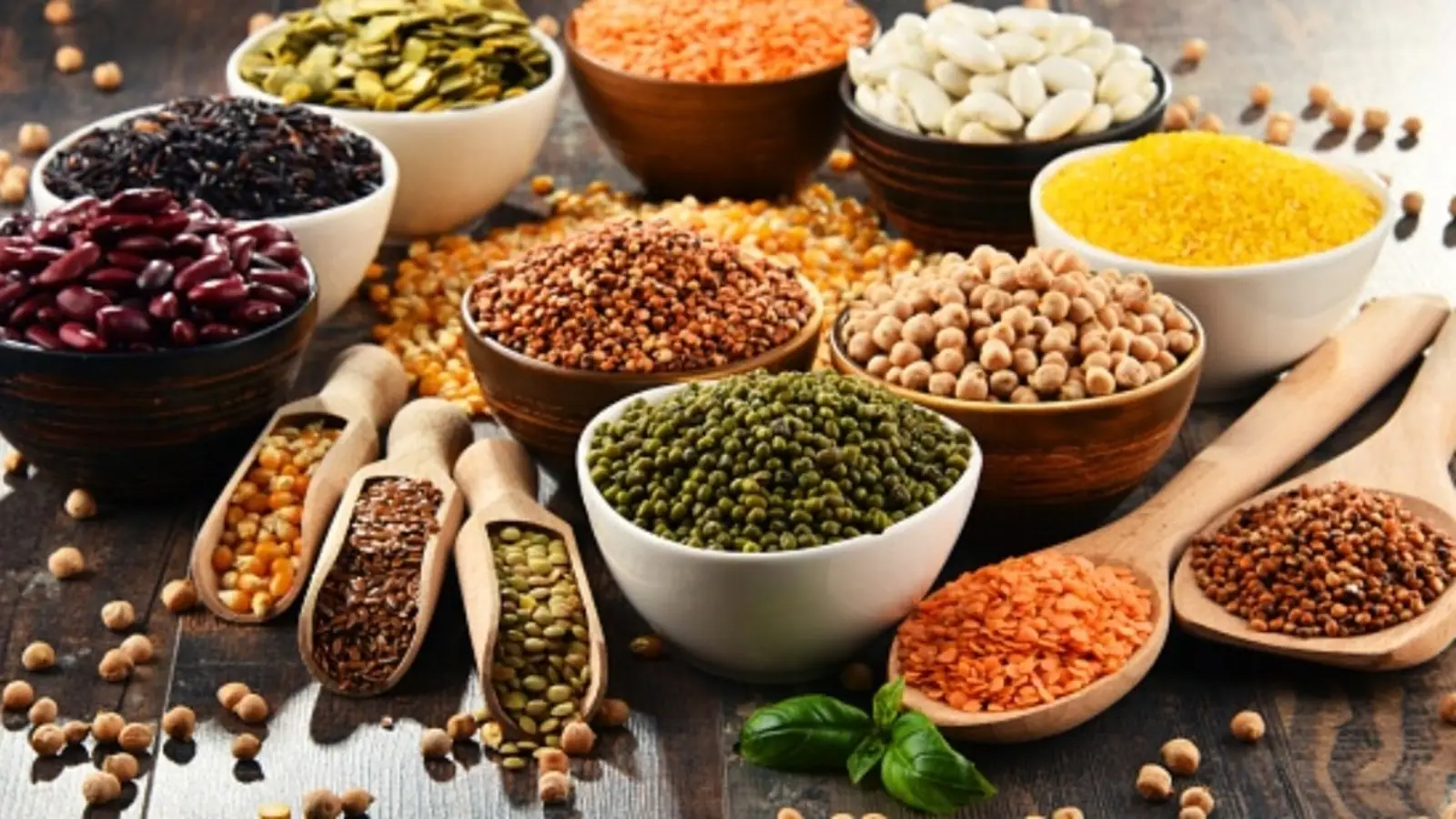- Courses
- GS Full Course 1 Year
- GS Full Course 2 Year
- GS Full Course 3 Year
- GS Full Course Till Selection
- Answer Alpha: Mains 2025 Mentorship
- MEP (Mains Enrichment Programme) Data, Facts
- Essay Target – 150+ Marks
- Online Program
- GS Recorded Course
- Polity
- Geography
- Economy
- Ancient, Medieval and Art & Culture AMAC
- Modern India, Post Independence & World History
- Environment
- Governance
- Science & Technology
- International Relations and Internal Security
- Disaster Management
- Ethics
- NCERT Current Affairs
- Indian Society and Social Issue
- NCERT- Science and Technology
- NCERT - Geography
- NCERT - Ancient History
- NCERT- World History
- NCERT Modern History
- CSAT
- 5 LAYERED ARJUNA Mentorship
- Public Administration Optional
- ABOUT US
- OUR TOPPERS
- TEST SERIES
- FREE STUDY MATERIAL
- VIDEOS
- CONTACT US
World Pulses Day
World Pulses Day

World Pulses Day
- World Pulses Day is celebrated every year on February 10. This observance began in 2018 under the guidance of the United Nations and the Food and Agriculture Organization (FAO) to highlight the importance of pulses in global food systems.
- Theme for 2025: Pulses: Bringing Diversity to Agrifood Systems.
- The theme emphasizes the role of pulses in promoting agricultural and food system diversity, both above and below the ground.
- This theme highlights how pulses contribute to soil health, biodiversity, and sustainable farming practices.
Pulse Mission - Key Points
The Pulse Mission is a government initiative aimed at increasing the production of pulses in India and achieving self-sufficiency in pulse production.
- Budget Allocation: The Union Budget 2025 has allocated Rs 1,000 crore for the implementation of the Pulse Mission over six years (2025-2026).
- Objective: The mission focuses on enhancing the production of pulses to meet India’s domestic requirements and reduce dependency on imports. The goal is to strengthen the agricultural sector by improving pulse cultivation practices and ensuring higher productivity.
Must Read: Union Budget 2025-26 Highlights Four Engines of Development
- Pulses Covered: The mission specifically targets the following three types of pulses:
- Tur (Arhar) – A staple pulse consumed widely across India.
- Urad (Mash) – A key pulse for various culinary preparations.
- Masoor (Lentils) – A commonly consumed rabi pulse, integral to the diet of many regions.
- Procurement Strategy: Central agencies like NAFED (National Agricultural Cooperative Marketing Federation of India) and NCCF (National Cooperative Consumers Federation) will procure pulses from farmers who register with these agencies, ensuring that farmers receive a fair price for their produce.
Must Read: Pulses Production in India
Understanding of Pulses under the Pulse Mission:
1. Pigeonpea (Tur/Arhar)
- Climatic and Soil Requirements:
- Climate: Pigeonpea (Arhar) thrives in tropical and semi-arid regions. It requires:
- Optimal Temperature: 26°C to 30°C during the rainy season (June to October) and 17°C to 22°C in the post-rainy season (November to March).
- Sunlight: Pigeonpea is sensitive to low solar radiation during pod development. Cloudy or rainy conditions during flowering can result in poor pod formation.
- Soil: It grows well in black cotton soils (which retain moisture) and well-drained loamy and alluvial soils.
- Diseases: Common diseases include wilt, sterility mosaic disease, Phytophthora blight, Alternaria blight, and powdery mildew, which can significantly reduce yield.
- Major Producing States:
- Uttar Pradesh: Leading state with 34.87% of national production.
- Madhya Pradesh: Contributes 34.55% of the national output.
- Other states like West Bengal, Bihar, and Jharkhand also contribute significantly.
- International Trade:
- Mozambique is a key exporter of pigeonpea to India. In 2023-24, India imported 7.71 lakh tons of pigeonpea, of which one-third (2.64 lakh tons) came from Mozambique.
- India has an MoU with Mozambique to ensure a steady supply of 2 lakh tons of pigeonpea until 2025-26.
- Similarly, an MoU with Malawi ensures an annual supply of 0.50 lakh tons of pigeonpea.
- Nutritive Value:
- Pigeonpea is an excellent source of protein, carbohydrates, and essential minerals like calcium, phosphorus, and iron.
- It is low in fat and provides a high calorific value, making it an important part of the diet, especially in rural areas.
2. Urad (Mash)
- Climatic and Soil Requirements:
- Climate: Urad is a tropical crop that prefers hot and humid conditions. In India, it is cultivated during:
- Rainy and summer seasons in Northern India.
- Winter season in Eastern India.
- Both rainy and winter seasons in Southern India.
- Soil: It thrives in well-drained loamy soils with a pH range of 6.5 to 7.8. However, it cannot be grown in alkaline or saline soils. Urad also fixes atmospheric nitrogen in the soil, improving soil fertility.
- Climate: Urad is a tropical crop that prefers hot and humid conditions. In India, it is cultivated during:
- Diseases: Common diseases include yellow mosaic virus, powdery mildew, and leaf blight. These can affect both the quality and quantity of the yield.
- Major Producing States:
- Madhya Pradesh: Accounts for 24% of the national area under Urad cultivation.
- Uttar Pradesh: Contributes 10% of the area.
- Maharashtra: Holds 7% of the national area.
- Highest Productivity: Andhra Pradesh has the highest yield of 915 kg/ha, followed by Jharkhand at 879 kg/ha.
- Nutritive Value:
- Urad is rich in protein and carbohydrates and contains essential minerals like calcium, phosphorus, and iron.
- It has a low-fat content and is an excellent source of energy, making it highly beneficial for maintaining a balanced diet.
3. Masoor (Lentils)
- Climatic and Soil Requirements:
- Climate: Lentils require a cold climate during the vegetative growth stage and a warm climate at maturity. The ideal temperature range is 18°C to 30°C.
- Hardiness: Lentils are hardy and can tolerate frost and cold weather during the early stages of growth.
- Soil: Best suited to well-drained loamy soils with neutral pH.
- Diseases: Lentils are susceptible to diseases like Stemphylium blight, wilt, and seedling mortality.
- Major Producing States:
- Uttar Pradesh: The largest producer, contributing 36.43% of India’s total lentil production.
- Madhya Pradesh: Second largest producer with 34.55% of the national production.
- Other states like West Bengal, Bihar, and Jharkhand also contribute to lentil production in India.
- Nutritive Value: Lentils are a rich source of carbohydrates, protein, fiber, folate, and thiamine. They also provide iron, zinc, potassium, and copper, essential for maintaining good health and supporting overall well-being.
Must Read: Economic Survey 2025: Download official PDF
|
Prime Minister Dhan-Dhaanya Krishi Yojana (PMDDKY)
|
The Pulse Mission plays a vital role in boosting pulse production in India, promoting self-sufficiency and sustainable farming practices. By focusing on key pulses like Tur (Arhar), Urad (Mash), and Masoor (Lentils), the government aims to improve farmers’ incomes, enhance soil fertility, and meet the growing demand for pulses.



